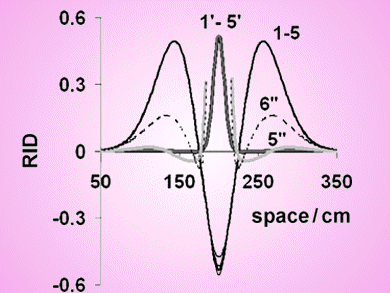Cross-diffusion, the phenomenon in which a flux of one species is induced by a concentration gradient of another species, can affect or even induce dissipative patterns in reaction-diffusion systems.
Irving Epstein and co-workers, Brandeis University, USA, have studied the cross-diffusion coefficients in the pentanary system: the Belousov–Zhabotinsky (BZ) reaction dispersed in a water-in-oil aerosol OT (AOT) microemulsion. This is the first time that cross-diffusion coefficients have been measured for a five-component system. The team used a modified Taylor dispersion method, initially developed for a three-component system, which also has been applied to a four-component system.
The cross-diffusion coefficients between BZ1 (either NaBr, an inhibitor of the BZ reaction, or ferroin, a catalyst) and Br2 are found to be negative, which can be understood in terms of complexation between these species. This leads to a noticeable shift in the onset of Turing instability in the BZ–AOT system.
- Pentanary Cross-Diffusion in Water-in-Oil Microemulsions Loaded with Two Components of the Belousov–Zhabotinsky Reaction
F. Rossi, V. K. Vanag, I. R. Epstein,
Chem. Eur. J. 2011.
DOI: 10.1002/chem.201002069




